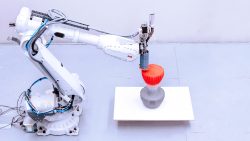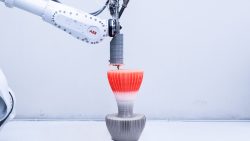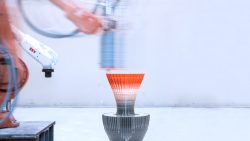
Ross Lovegrove
Ross Lovegrove is a designer and visionary whose work is considered to be at the very apex of stimulating a profound change in the physicality of our three-dimensional world.
Inspired by the logic and beauty of nature his designs possess a trinity between technology, materials science and intelligent organic form, creating what many industrial leaders see as the new aesthetic expression for the 21st Century.
There is always embedded a deeply human and resourceful approach in his designs, which project an optimism, and innovative vitality in everything he touches from cameras to cars to trains, aviation and architecture.
Born 1958 in Cardiff, Wales.
Graduated from Manchester Polytechnic with 1st Class BA Hons Industrial Design in 1980. Master of Design of Royal College of Art, London in 1983.
In the early 80’s worked as a designer for Frog Design in West Germany on projects such as Walkmans for Sony, Computers for Apple Computers, later moved to Paris as a consultant to Knoll International, becoming author of the highly successful Alessandri Office System.
Invited to join the Atelier de Nimes along with Jean Nouvel and Philippe Starck, consulting to amongst others Cacharel, Louis Vuitton, Hermes and Dupont.
Returning to London in 1986 he has completed projects for amongst others Airbus Industries, Kartell, Ceccotti, Cappellini, Idee, Moroso, Luceplan, Driade, Peugeot, Apple Computers, Issey Miyake, Vitra, Motorola, Biomega, LVMH, Yamagiwa Corporation, Tag Heuer, Hackman, Alias, Herman Miller, Renault, Artemide, Japan Airlines and Toyo Ito Architects in Japan.
Winner of numerous international awards his work has been extensively published and exhibited internationally including the Museum of Modern Art in New York, the Guggenheim Museum NY, Axis Centre Japan, Pompidou Centre, Paris and the Design Museum, London, when in 1993 he curated the first Permanent Collection.
Ross Lovegrove X Nagami
Robotica TM takes form at the convergence of two fields – botany and robotics – to coin a new approach to design that crystallises the natural programming in nature with that of robotics within artificial manufacturing. Built from a rotational geometry, Robotica TM presents an indirectly intelligible function. Thanks to its adaptable character, the high stool, which has 360° formal access, can also perform as a table upon which to place food that has just been taken out of the oven, due to its heat-proof silicone inserts in the seat, or as a plinth for a sculpture-TV, or even as a stand-alone aesthetic object, fulfilling any ancillary needs within a home.
Other designers








